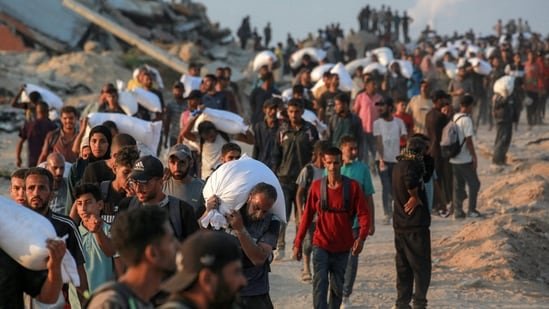When Israel’s attacks on Iran began before dawn on June 13, explosions shattered the homes of some of Iran’s top scientists, killing nine people who had worked for decades on Tehran’s nuclear program. All nine were killed in near-simultaneous attacks to prevent them from going into hiding, according to people familiar with the attacks.

Eleven days later, hours before a cease-fire brokered by the U.S. and Qatar took effect Wednesday, an attack in northern Iran killed another scientist, Sayyed Seddighi Saber, according to Israeli and Iranian state media. He was sanctioned just weeks ago by the U.S. for his nuclear weapons-related work.
The attack on the scientists was considered so fantastical by even its planners that it was called “Operation Narnia,” after the fictional C.S. Lewis series.
The killings were the culmination of 15 years of efforts to wipe out one of Iran’s most prized assets—the top cadre of scientists who worked on a secret nuclear-weapons-related program that Iran had pursued at least until 2003. Israel has closely tracked the scientists ever since.
While the U.S. and Israel are trying to assess the extent of damage done by their strikes on Iran’s main nuclear sites, Israeli Prime Minister Benjamin Netanyahu has claimed the killings have pushed back Iran’s nuclear program by years.
Former officials and experts say the attacks against the scientists delivered a powerful blow against Iran’s ability to race for the bomb in the aftermath of the conflict. Most of the people killed, a total of at least 11 by the time a cease-fire took effect Wednesday, had hands-on experience in testing and building components of a warhead, like the detonation systems, high explosives and the neutron sources that trigger the chain reaction.
“It’s one thing to lose that expertise slowly over time, especially if you are not trying to actually build a bomb. You have time to replace them,” said Eric Brewer, who was U.S. national security director for counterproliferation. “But if you’re in the middle of trying to build a bomb or if you see that as a potential near-term option, then it’s going to have a bigger impact.”
Iran has retained and passed a lot of that expertise on to a new generation of scientists. It has denied ever having sought the bomb, saying its program is peaceful.
The U.N. atomic agency said Iran had a nuclear-weapons-related program, known as the AMAD project, until 2003. Israeli and Western officials say that Iran’s nuclear weapons work has continued in a more fragmented way since then, leaving Iran within months of being able to build a bomb. But much of that work has been confined to studies and computer modeling, always carefully designed to be explained away as conventional military work.
A week after the June 13 attacks, Israel used a drone to kill another scientist who was being kept in what was supposed to be a safe house in Tehran. The person hasn’t been named. Israel also said last week it had bombed the Tehran headquarters of the SPND, the successor organization of AMAD.
The deadly airstrikes were the first to target Iran’s nuclear scientists since 2020, when Mohsen Fakhrizadeh was gunned down with a remote-controlled weapon. Israel has never denied or confirmed its role in the deaths of five Iranian scientists between 2010 and 2020.
On Saturday, thousands attended the funerals of the scientists and other prominent Iranians killed during the conflict, Iranian state media said. Some of the coffins carried family members of the scientists, the semi-official Fars News Agency reported. Israel hasn’t commented on whether family members were also killed in the strikes targeting the scientists.
Israel said its actions have stopped Iran from crossing the threshold to having a nuclear weapon.
Among the most important targets was Fereydoon Abbasi-Devani, the former head of the Atomic Agency of Iran and one of the founders of Iran’s nuclear weapons-related work, according to David Albright, president of the Institute for Science and International Security. Abbasi-Devani was a manager and senior adviser to the AMAD program, with his scientific work focusing on the development of neutron initiators, which fire neutrons into the core of a weapon to trigger a chain reaction.
Abbasi-Devani survived a car-bomb assassination attempt in 2010 on the same day another Iranian nuclear scientist was killed. In a recent TV interview, Abbasi-Devani said Iran had all the knowledge it needed for a nuclear weapon. “If they tell me to build a bomb, I will build it,” he said.
Another killed scientist was Mohammad Mehdi Teranchi, who led a unit under Fakhrizadeh focusing on high explosives, which are needed to detonate a nuclear weapon, according to the U.S. Treasury Department. He later became a professor at the physics department of Tehran’s prestigious Shahid Beheshti University, where a large number of nuclear scientists, including Abbasi-Devani, worked, said Ronen Solomon, an Israeli security analyst.
One of the last targets, Sayyed Seddighi Saber, was head of the key Shahid Karimi Group, which runs explosives-related projects for the SPND program. A spokeswoman for the Israeli military declined to name the person killed.
“Seddighi Saber is linked to projects including research and testing applicable to the development of nuclear explosive devices,” the U.S. Treasury Department said when it sanctioned him on May 12.
Abbasi-Devani and Teranchi were also sanctioned by the U.S. along with others for their nuclear-related work. So was Shahid Beheshti University.
Andrea Stricker, a research fellow at the Foundation for Defence of Democracies, a Washington think tank, said Israel’s targeted killings took out the “brain trust of nuclear scientists” and dealt “a blow to Iran’s ability to draw on people who have past and possibly ongoing experience in constructing specific components of nuclear weapons.”
Yet others describe a sophisticated system Iran had developed for retaining and advancing its nuclear-weapons expertise. That system has allowed Iran’s nuclear program to advance even as its top scientists were being killed.
Iran has for years maintained a nuclear archive detailing all the work it had carried out before 2003, as well as Tehran’s future plans. It was discovered and raided by Israeli commandos in 2018. Iran kept old nuclear-weapons-related equipment, including undeclared enriched uranium, just down the road from the archive. It was dispersed in 2018 and the U.N. atomic energy agency has been demanding answers ever since to where it was sent.
Iran has used universities like Shahid Beheshti, the Sharif University of Technology and Malek Ashtar University to keep alive its nuclear-weapons expertise over the past two decades, Solomon said.
At these universities, Iran often matches up its nuclear scientists on experiments and other studies with younger students, Solomon said. Two of the scientists killed on June 13, Ahmadreza Zolfaghari and Abdulhamid Minouchehr, published an article in the Annals of Nuclear Energy in June 2024 that used advanced computer modeling to show how neutron sources behave in a chain reaction, he said.
That information can be used for civilian purposes, like building a nuclear reactor, or to help trigger a chain reaction in a nuclear weapon.
“There are the professors, and they are teaching the younger scientists…to enter the heart of the Iranian nuclear program,” Solomon said.
Write to Laurence Norman at laurence.norman@wsj.com and Dov Lieber at dov.lieber@wsj.com










